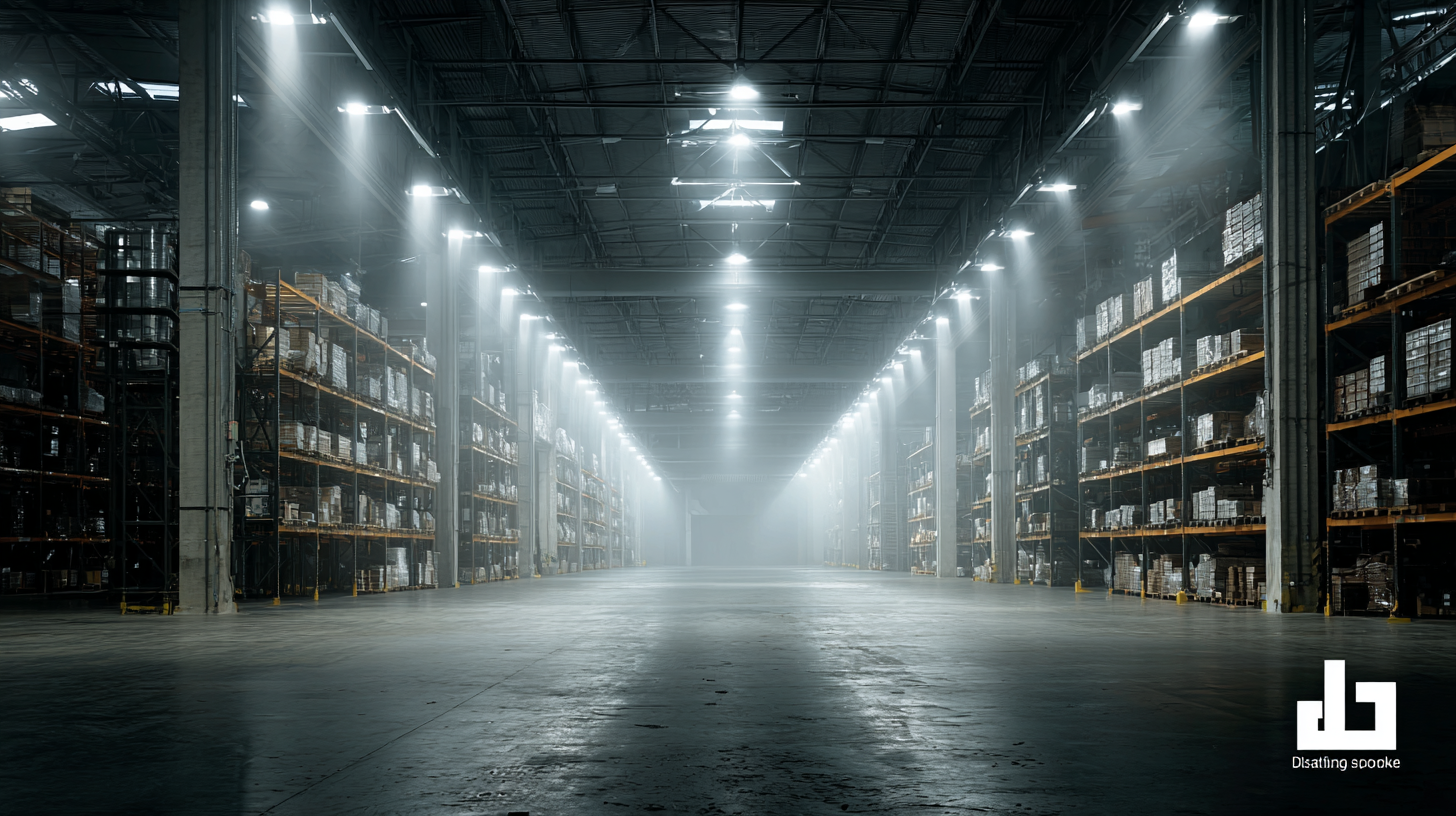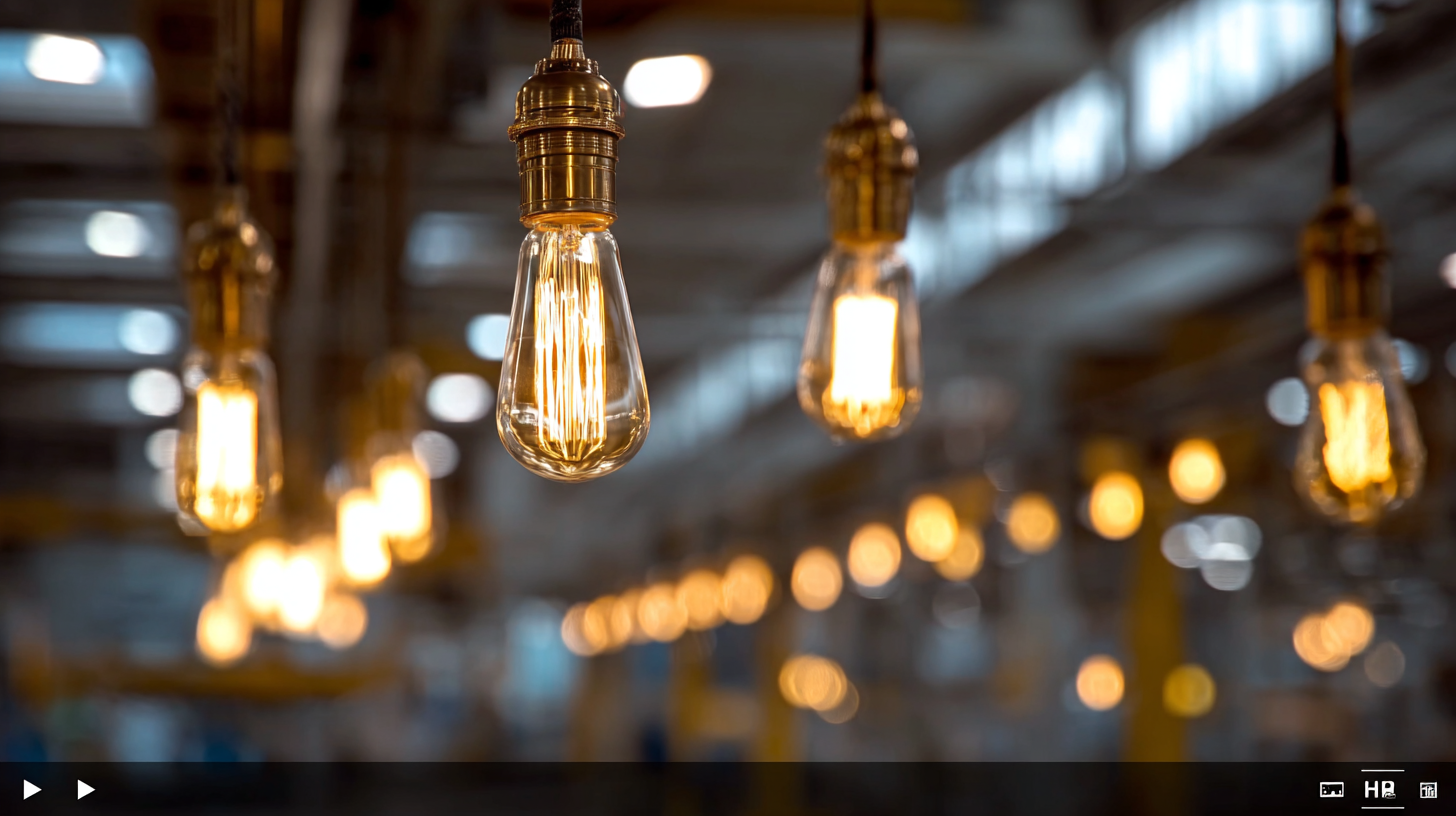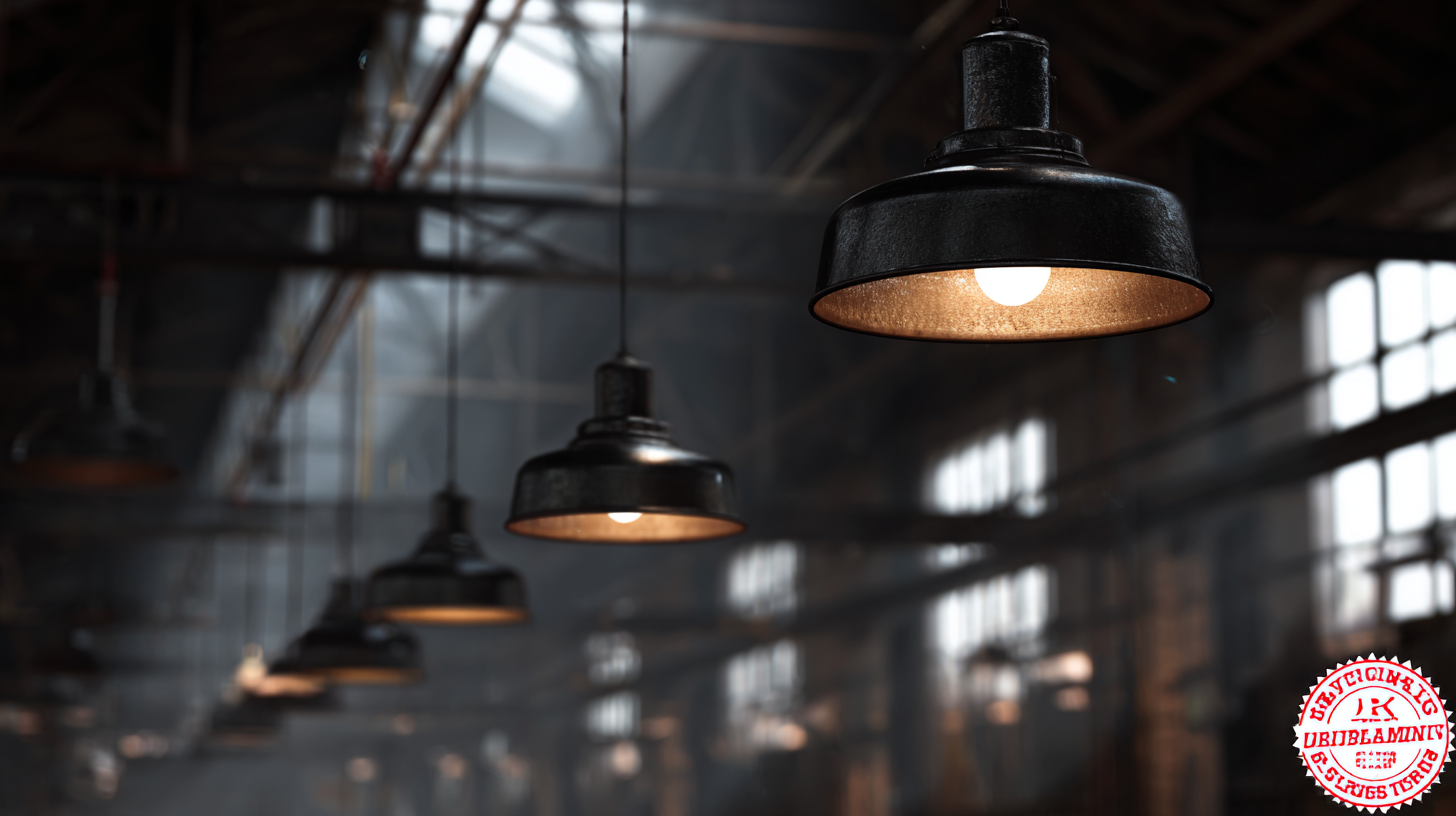8 Reasons Why Best Industrial Lighting Is Essential for Your Business Success
Proper industrial lighting is not just a matter of visibility; it significantly impacts various aspects of business performance. According to a report by the International Institute for Sustainable Development, well-lit work environments can enhance productivity by 20% and reduce workplace accidents by up to 50%. Moreover, the U.S. Department of Energy highlights that effective lighting solutions can improve energy efficiency, leading to substantial cost savings—potentially up to 30% in energy expenditures. In an era where operational efficiency and employee well-being are paramount, understanding the importance of industrial lighting is crucial for success. This blog will explore eight compelling reasons why investing in the best industrial lighting is essential for your business, from boosting productivity to ensuring safety and sustainability.

The Impact of Proper Industrial Lighting on Employee Productivity and Safety
 Proper industrial lighting is critical for enhancing employee productivity and ensuring safety in the workplace. According to the Illuminating Engineering Society, well-designed lighting boosts productivity by up to 20%. Employees who operate in environments with adequate lighting are less prone to fatigue and more engaged in their tasks. This is particularly important in industrial settings where precision and focus are crucial.
Insufficient lighting can lead to errors and accidents, demonstrating that effective lighting not only aids concentration but also helps in maintaining high standards of work.
Proper industrial lighting is critical for enhancing employee productivity and ensuring safety in the workplace. According to the Illuminating Engineering Society, well-designed lighting boosts productivity by up to 20%. Employees who operate in environments with adequate lighting are less prone to fatigue and more engaged in their tasks. This is particularly important in industrial settings where precision and focus are crucial.
Insufficient lighting can lead to errors and accidents, demonstrating that effective lighting not only aids concentration but also helps in maintaining high standards of work.
Additionally, the National Safety Council reports that poor lighting accounts for approximately 30% of workplace accidents. In industries like manufacturing and warehousing, where hazards are prevalent, proper lighting can significantly reduce risks, ensuring that employees can see clearly and make safer decisions. Strategic lighting setups can highlight potential dangers, guiding workers towards safer practices. By investing in high-quality industrial lighting, businesses not only protect their workforce but also foster a culture of safety and efficiency, which ultimately contributes to overall organizational success.
How Quality Lighting Reduces Operational Errors and Boosts Efficiency
Quality lighting plays a vital role in enhancing operational efficiency and minimizing errors in industrial settings. Proper illumination reduces the likelihood of accidents and miscommunication among employees, as well-lit environments allow workers to see clearly and focus better on their tasks. When workers can easily identify details, whether they're reading blueprints or monitoring machinery, the chances of mistakes decrease significantly, thereby driving productivity levels higher.
Moreover, well-designed industrial lighting can improve employee morale and comfort. A workspace illuminated by high-quality lighting systems reduces eye strain and fatigue, fostering a more engaged and alert workforce. This increase in employee satisfaction translates into higher output and fewer operational disruptions. By investing in quality lighting solutions, businesses not only create a safer environment but also cultivate a culture of efficiency and accuracy, which is crucial for achieving long-term success in today's competitive landscape.
Key Energy Savings: The Financial Benefit of Upgrading to LED Industrial Lighting
Upgrading to LED industrial lighting can significantly impact your bottom line. One of the key financial benefits is the reduction in energy costs. Unlike traditional lighting options, LEDs consume far less electricity, leading to immediate savings on utility bills. For businesses operating in large warehouses or manufacturing plants, these savings can accumulate rapidly, enhancing overall profitability.
Additionally, LEDs have a longer lifespan compared to incandescent or fluorescent lights. This means fewer replacements, reduced maintenance costs, and less downtime for your operations. By transitioning to LED lighting, you’re not just saving on energy but also minimizing the expenses associated with frequent replacements and repairs.
**Tips:** When considering an upgrade, assess the initial investment against long-term savings. Look for rebates and incentives offered for energy-efficient upgrades, as these can further decrease your upfront costs. Moreover, ensure that you choose high-quality LED lights that provide adequate brightness for your specific industrial needs, maximizing both safety and efficiency.
The Role of Lighting in Enhancing Product Quality and Customer Experience
Lighting plays a crucial role in defining the quality of products and enhancing customer experiences across various industries. According to a survey conducted by the Lighting Research Center, 70% of consumers believe that lighting significantly impacts their perception of product quality. Proper lighting not only accentuates the details in products but also influences color accuracy, making items more appealing to potential buyers. In retail environments, well-lit displays can lead to a 20-25% increase in sales, as customers are more inclined to engage with products that are illuminated effectively.
Moreover, the right industrial lighting can improve safety and productivity, directly impacting customer experiences. A report from the U.S. Department of Energy suggests that increasing workplace lighting levels can lead to a 15% increase in employee productivity. Clear visibility not only assists in efficient operations but also assures customers of the safety and professionalism of the business. Enhanced lighting design can foster a welcoming atmosphere, encouraging customers to spend more time within a space, ultimately translating to higher sales and improved customer satisfaction. Thus, investing in high-quality industrial lighting is essential for businesses aiming to elevate both their product offerings and customer interactions.
8 Reasons Why Best Industrial Lighting Is Essential for Your Business Success
| Reason | Impact on Product Quality | Effect on Customer Experience | Cost Efficiency |
|---|---|---|---|
| Improved Visibility | Enhances quality control in production | Increases customer satisfaction due to better visibility of products | Reduces errors and waste, leading to lower costs |
| Highlighting Features | Showcases product details effectively | Captivates customer attention, enhancing purchase desire | Encourages higher sales through better presentation |
| Energy Efficiency | Maintains consistent light quality | Creates a pleasant shopping environment | Lowers energy bills over time |
| Safety Enhancements | Reduces accidents during production | Builds customer confidence in safety | Minimizes liability costs |
| Employee Productivity | Boosts focus and reduces errors | Fosters a positive shopping experience | Drives revenue through higher productivity |
| Aesthetic Appeal | Improves the overall aesthetic of products | Attracts customers through appealing displays | Can justify premium pricing |
| Flexibility of Design | Enables innovative product displays | Enhances interactive customer experiences | Allows for quick changes to displays |
| Sustainability Initiatives | Supports eco-friendly product quality | Appeals to environmentally conscious customers | Can reduce operational costs significantly |
Compliance and Regulations: Why Adequate Lighting Matters for Industry Standards
 Adequate lighting is not just a matter of aesthetics in industrial settings; it plays a crucial role in compliance with industry regulations. According to the Occupational Safety and Health Administration (OSHA), workspaces must adhere to specific lighting standards, often requiring at least 5 foot-candles of illumination in areas where workers perform tasks. Insufficient lighting can lead to job hazards, increased accidents, and potential fines, making it vital for businesses to invest in high-quality lighting solutions that meet or exceed these requirements.
Adequate lighting is not just a matter of aesthetics in industrial settings; it plays a crucial role in compliance with industry regulations. According to the Occupational Safety and Health Administration (OSHA), workspaces must adhere to specific lighting standards, often requiring at least 5 foot-candles of illumination in areas where workers perform tasks. Insufficient lighting can lead to job hazards, increased accidents, and potential fines, making it vital for businesses to invest in high-quality lighting solutions that meet or exceed these requirements.
Moreover, studies published by the Illuminating Engineering Society (IES) indicate that proper lighting enhances productivity and reduces fatigue. When employees work in well-lit environments, their ability to perform tasks efficiently increases significantly. For instance, a report revealed that productivity can improve by up to 23% when natural light or high-quality artificial lighting is utilized, which not only aids in compliance but also boosts overall business output. Therefore, ensuring adequate lighting not only aligns with regulatory standards but also fosters a safer and more productive workplace.
